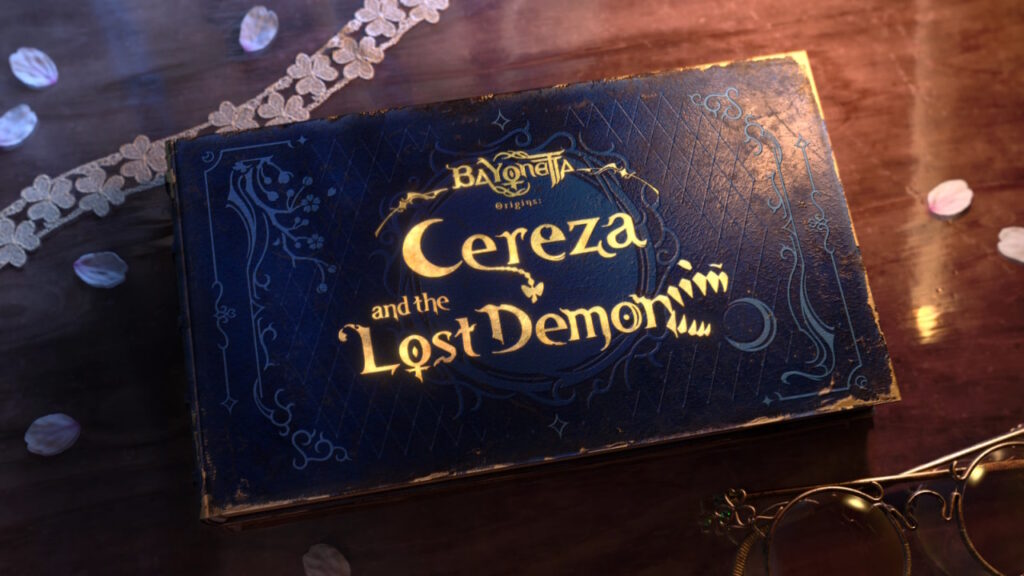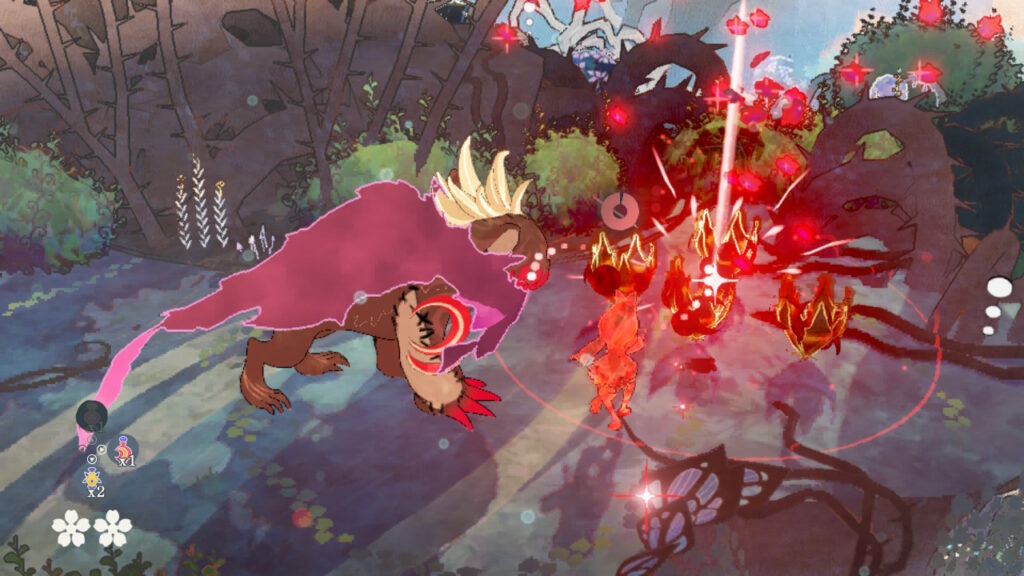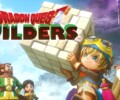
Developer: Platinum Games
Publisher: Nintendo
Platform: Switch
Tested on: Switch
Bayonetta Origins: Cereza and the Lost Demon – Review
It seems like it’s a fantastic time to be a Bayonetta fan. After the whopping eight years of silence between Bayonetta 2 and Bayonetta 3, a brand new entry in the series is already here, a mere five months after the Umbra Witch’s latest outing. Granted, the new spin-off title Bayonetta Origins: Cereza and the Lost Demon takes the series in a vastly different direction, so it might not necessarily be what fans are clamoring for. How does this dramatic departure from the series trademark hack-and-slash action hold up, both in comparison to the mainline games and as a standalone title?
Story
As the full title indicates, Cereza and the Lost Demon tells the story of how the young witch Cereza becomes the powerful Bayonetta. The game is presented in the form of a fairy tale storybook, complete with a narrator. As explained in the introduction to our story, Cereza was born out of a forbidden romance between one of the Lumen Sages of Light and one of the Umbra Witches of Darkness. Her heritage causes the young girl to be treated as an outcast, and Cereza’s mother is locked up. When Cereza is ten years old, her mother is transported to a deeper cell, meaning that Cereza is no longer able to visit her. Because of this, the young witch apprentice becomes more motivated to become a powerful witch, so that she can eventually break her mother out of prison. Cereza receives training from the powerful and strict witch Morgana, who forbids her to go out into the faerie-infested Avalon Forest.
After Cereza screws up her first demon-summoning ritual, a strange dream draws her to the forest, despite Morgana’s warnings. In the dream, a boy tells her to follow a white wolf who will guide her to a tremendous power. Together with Cheshire, her stuffed cat, Cereza sets out to seek this power. While in the forest, Cereza discovers that she accidentally trapped a demon inside Cheshire, and the stuffed animal becomes her powerful ally in exchange for the demon to be freed once the ordeal is over. This unlikely duo now must make the journey through Avalon Forest, tracking down the white wolf and finding the power necessary for Cereza to free her mother from the prison.
Graphics
The storybook aesthetic is present in every aspect of the game, from the gorgeous hand-drawn art style to the transitions between scenes, which resemble pages being flipped over. The soft color palette fits the fairy-tale atmosphere, although the overall look of the game is a far cry from the bombastic and over-the-top visuals and quasi-realistic graphics from the mainline Bayonetta games. Those familiar with the Bayonetta universe will still instantly recognize characters like Cereza and Jeanne, even if they are aged down and stylized versions, which speaks volumes about the strong art direction. Visual performance is excellent too, though given Platinum Games’ track record and the simpler graphics, that shouldn’t come as a surprise.
Sound
We’ve already mentioned that the game’s story is told through a narrator, but Cereza and the Lost Demon is fully voice acted as well. The sheer amount of dialogue defines the game’s overall soundscape, as there is a lot of talking going on, and thankfully the performances are strong. We couldn’t find any info about who voices young Cereza but the actress does a stellar job, adding a ton of emotion to the character’s articulation. Composer Hitomi Kurokawa returns from Bayonetta 2, with an atmospheric soundtrack that is befitting of the game’s storybook presentation, with the absolute highlight being the game’s main theme song, which features lyrics by Irish composer Michael McGlynn. Finally, the ambient sound effects tie everything together, creating a satisfying end result.
Gameplay
The first thing we’ll say about Cereza and the Lost Demon’s gameplay is that existing fans should temper their expectations, as this is a very different game than what you might expect. Instead of the series’ signature combat-focused hack-and-slash action gameplay, what you’re getting here is an asymmetrical puzzle adventure game, which sees you take control of both Cereza and Cheshire as you try to make your way through Avalon Forest, dealing with environment-based obstacles along the way. There is combat present, mostly against faeries, but the fights you’ll engage in take a backseat compared to the puzzle gameplay. These puzzles start out simple enough but gradually become more challenging, as you need to start combining the different abilities of our protagonist duo in different ways. We did feel like the inventiveness of these dwindled down in the latter half of the game, but at their core, the puzzle mechanics are solid and the game feels very polished for what it wants to be.
Cereza and Cheshire bring different abilities to the table, with the young witch able to cast spells that let her bind enemies, squeeze through tight spots, craft potions, and the like. Meanwhile, Cheshire is a powerful character that is able to destroy tree roots that block the way and knock out enemies, but that also can’t make it past specific obstacles, like bushes of rosemary. Each character is controlled with a separate thumb stick and they can’t be too far apart from one another for too long. We half expected Cereza and the Lost Demon to offer a two-player co-op mode, where each player takes on the role of one of the two protagonists, but this wasn’t implemented in the game. This seemed like a baffling design choice at first, but it started to make sense once we realized that there is a third control option that ‘merges’ the two characters by returning Cheshire to his stuffed cat form, being carried by Cereza. In this form, Cereza can use Cheshire as a grappling hook, or toss him to reach specific places he can’t reach on his own, for example. Because of how clunky the controls feel, it’s likely that you’ll be spending the majority of your time playing as this ‘merged’ form unless a puzzle requires you to split up.
Admittedly, the ‘clunkiness’ of the controls is something that gradually becomes less of a problem as you get used to the twin-stick controls. It’s important to keep an eye on both characters at any given time, and especially early on, there’s a good chance that you’ll accidentally move Cereza when you want to move Cheshire as muscle memory kicks in and moving a character is typically done with the left stick while Cheshire is tied to the right one. This is something that is especially prevalent in combat, where you’ll need to keep Cereza near enemies to bind them but also need to keep her safe from incoming attacks, whereas Cheshire is your main tool to dispose of those same enemies permanently. There’s a sense of progress to combat too, as you’ll gradually unlock elemental spells that grant new forms to Cheshire, and later enemies will require you to use corresponding forms to get past elemental barriers. The core combat formula is rather simplistic and one-note and the elemental additions add some much-needed variety, given that the biggest obstacle is how well your brain responds to the twin-stick controls.
Playing through the main story of Cereza and the Lost Demon should take most players between twelve and fifteen hours, although the game’s longevity is somewhat extended by so-called Tir na nÓgs, mini-dungeons that can be repeatedly challenged. Defeating these faster will yield better rewards, and the ultimate goal is to clear them against a set time limit to get a higher score. It’s a neat little addition, although it’s not enough to justify the game’s price tag, which feels a bit too high for the amount of content that you’re getting here. As it stands, Cereza and the Lost Demon also holds a bit of an interesting position in the Bayonetta lineup, as it’s much more accessible and family-friendly than the other games in the series. Long-time series fans can look forward to how the game fleshes out the lore, and newcomers can dive in without having any prior knowledge of the series. Ultimately, Cereza and the Lost Demon succeeds as a standalone release, although we’re not sure whether it’s a good entry point into the series, as the departure from the other games is too much to really give an idea of what the other Bayonetta games are like.
Conclusion
A short but sweet affair, Cereza and the Lost Demon fleshes out Bayonetta as a character in a way that fans of the series will enjoy, while also remaining accessible for those that have never crossed paths with the Umbra Witch. The puzzle-based gameplay is polished and accessible, although fights could have been fleshed out more, especially given the combat-based nature of the mainline games. Ultimately, Cereza and the Lost Demon succeeds more as a standalone, family-friendly fairy-tale puzzle game than as something that is inherently tied to the ultra-violent, over-the-top R-rated games that you’d associate with its main character. That’s not to say that Cereza is a bad game, because it isn’t, we’re just saying that you should keep your expectations in check.
Bayonetta Origins: Cereza and the Lost Demon - Review,1 Comment
Leave a Reply
You must be logged in to post a comment.










[…] the latest Bayonetta title is still fresh in our minds, a new young witch is already contending for our attention on the […]